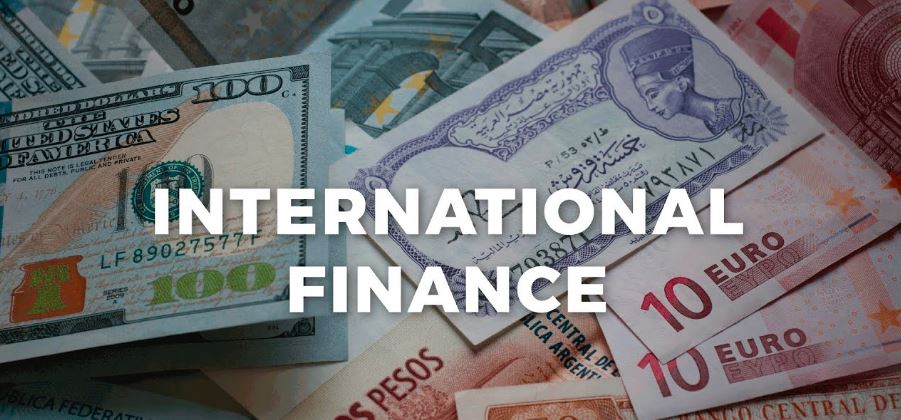Finance Types:
It is possible to divide the vast area of finance into a few primary categories according to its scope. The management, creation, and analysis of financial resources are all areas that are addressed by each form of financial management. The following are the major finance types:
Personal Finance
When we talk about personal finance, we are referring to the management of the financial activities of an individual or household members. It’s a prt of finance types. Budgeting, saving, investing, preparing for retirement, and managing debt and insurance are all included in this kind of financial planning. The purpose of personal finance is to enable individuals to make well-informed choices as a means of achieving their own financial objectives, achieving financial stability, and preparing for future financial requirements.

- Planning and managing one’s own or one’s household’s money is what budgeting is all about.
- Saving is the process of putting money away for future needs or unexpected expenses.
- Putting money into assets such as stocks, bonds, or real estate with the intention of generating returns is referred to as investing.
- Retirement planning is the process of preparing one’s finances for retirement, often via retirement accounts such as 401(k)s or IRAs among other options.
- The process of managing and repaying personal debts, including mortgages, school loans, and credit card obligations, is referred to as debt management.
- Protection against monetary loss by the purchase of several forms of insurance (such as health, life, vehicle, and life insurance, among others).
Corporate Finance
One definition of corporate finance is the management of a company’s financial operations with the goal of increasing the value of the company’s shareholders. Managing short-term financial operations, as well as making choices on capital investment and financing, are necessary components of this process. It’s a prt of finance types. Capital budgeting, capital structure, working capital management, and financial risk management are some of the key topics to focus on.

- The process of determining which projects or investments a corporation ought to pursue is referred to as capital budgeting.
- Establishing the proportion of debt to equity financing is referred to as capital structure.
- Working Capital Management is the process of managing a business’s short-term assets and liabilities in order to guarantee that the firm is able to fulfill its short-term commitments.
- In the context of corporate finance, financial risk management refers to the process of identifying and reducing risks.
- Buying, selling, splitting, and merging firms are all examples of mergers and acquisitions (M&A), which refers to the strategy, planning, and implementation of these transactions.
Public Finance
When we talk about public finance, we are referring to the administration of a government’s expenses, revenues, and debt. In order to provide public goods and services, maintain economic stability, and encourage economic progress, it is necessary to implement fiscal policy, which includes budgeting, taxes, and public expenditure initiatives. Within the public sector, the objective is to distribute resources in a manner that is both efficient and equitable.

- Taxes and other forms of income are collected by the government in order to provide funding for public services.
- The process of allocating and spending money from the government on public services and infrastructure is referred to as public expenditure.
- The process of planning government budgets and putting policies into effect in order to impact the economy is referred to as budgeting and fiscal policy.
- Managing the borrowing and repayment of the government’s debt is referred to as “public debt.”
- Stabilization of the Economy: The use of fiscal policy in order to stabilize the economy (for example, by spending on stimulation).
International Finance
The field of study known as international finance is concerned with the analysis and administration of financial dealings and investments that take place across international boundaries. Foreign exchange markets, international trade finance, worldwide investment strategies, and the management of risks associated with currency volatility and political instability are all included in this. In a global setting, the objective is to maximize the effectiveness of financial choices.

Foreign Exchange Markets: Trading currencies and controlling exchange rate risk.
International Trade Finance: Managing hazards associated with international commerce and providing financing for it.
Global Investments: Managing international portfolios on top of investing in assets located in other countries.
Cross-border Banking: Offering banking services in a variety of nations or regions.
Multinational Financial Management: Managing the financial affairs of an international firm.
Behavioral Finance
Behavioral finance is the study of how psychological factors and cognitive biases influence the financial behaviors and decisions of individuals and markets. It explores why and how people sometimes make irrational financial choices, leading to market anomalies and inefficiencies. The goal is to understand and improve financial decision-making processes.

Investor Behavior: Analyzing how individual and institutional investors make financial choices.
Psychological Factors: One must have an understanding of the ways in which cognitive biases and emotions impact financial choices.
Market Anomalies: The study of abnormalities in financial markets that cannot be explained by conventional ideas used in finance.
Development Finance
A project or effort that is intended to promote economic growth and reduce poverty in developing nations or areas is referred to as development finance. growth finance is the funding of such projects and initiatives. It’s a prt of finance types. Supporting infrastructure projects, social programs, and private sector growth via the provision of financial resources, technical aid, and policy guidance is what it entails. In order to attain sustainable development objectives, the objective is to drive economic growth, enhance living standards, and meet the goals.

Economic Development Projects: Providing funding for initiatives that are intended at improving the economic circumstances of various developing areas.
Impact Investing: The practice of investing in initiatives that, in addition to generating financial gains, also provide social and environmental advantages.
Microfinance: Small loans and other financial services are made available to people and small enterprises located in locations that are not well serviced.
Related Questions
- How can individuals optimize their savings and investment strategies ?
Ans. Determining investment goals and objectives
It focuses on establishing objectives that are both short-term and long-term that are both clear and defined. If you want to achieve your short-term objectives, you may purchase a vehicle or pay for your schooling. One of your long-term objectives may be to be prepared for retirement. Setting these objectives will assist you in developing your financial plans.
- What are the main sources of financing available to corporations ?
Ans. Retained profits, loan capital, and equity capital are the three primary forms of finance through which corporations get their funding.
- How do governments decide on their budget priorities ?
Ans. A clear indication of the government’s priorities is provided by the amount of money that is allotted for each purpose. The amount of money that is allocated in the budget for capital expenditure is a wide indicator that may be used to evaluate the budget. This measure demonstrates a government’s commitment to economic development since capital expenditures are responsible for the creation of productive assets such as infrastructure.
- How do international trade agreements affect global financial markets ?
Ans. As a result of the reduction in levies, trade agreements have the potential to drastically cut operating expenses for enterprises. The opening of new markets, the enhancement of competitiveness, and the promotion of economic development via improved possibilities for trade and investment are all outcomes of these efforts.
- How does microfinance contribute to poverty alleviation and economic empowerment ?
Ans. Role of Microfinance in Poverty Eradication.
Microfinance is a sort of financial assistance that aims to broaden the boundaries of financial service supply by offering financial services to those who are economically disadvantaged and who are not serviced by traditional formal financial institutions.
See more:- What is Finance, Finance Mean, Purpose of Finance?

I am expert skilled in SEO content Creation. My name is Narinder Kumar. I have an experience in creating websites, (SEO) Content Creation , Articles Blogs & more. Currently I prepared a SEO Content in Eduction Purpose, Entertainment, Finance Management etc.

